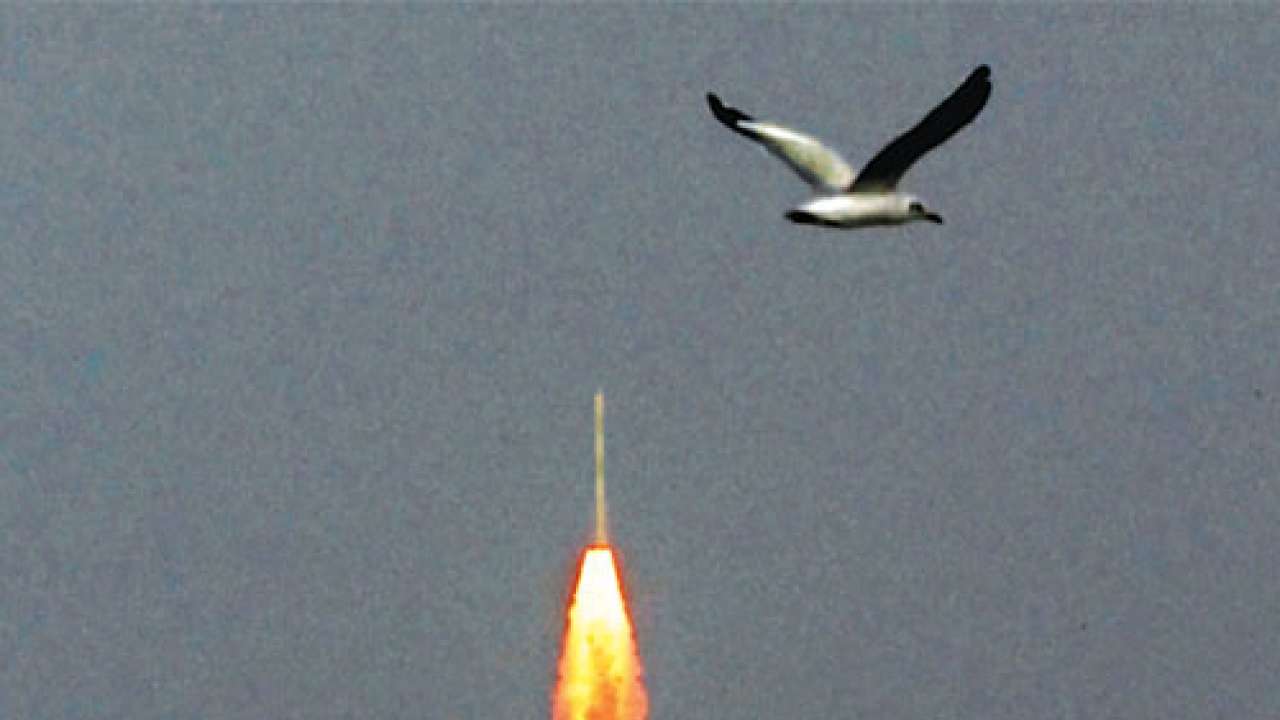
The Mars Orbiter Mission (MOM) launched successfully from the Satish Dhawan Space Station in Sriharikota on Tuesday afternoon is now set on a long journey to the Red Planet. The orbiter will find its way to Mars — some 400 million kilometres away — through a complicated and highly challenging trajectory. The orbiter will rotate around the earth several times and at designated points its speed will be increased gradually using an on-board propulsion system. When it gains enough speed it will be manoeuvred to escape the gravitational pull of the earth and move tangentially towards Mars.
For a country steeped in ancient beliefs around Mars and other planets, a mission to deep space is more than just a scientific endeavour. In the marriage market of 21st century India, being born on a day when Mars is in a so-called unfavourable constellation (being a manglik) is still considered a curse. All this when we know that the planet being blamed for the misfortune of mangliks is actually located several hundred million kilometres away and there is no way its sphere of influence could extend to marriage prospects of individual earthlings. Ironically, space scientists too seem to believe in divine interventions — be it in the Indian Space Research Organisation (ISRO) or NASA. It is customary for successive ISRO chiefs to offer replicas of launch vehicles and satellites to be launched to Lord Venkateswara a day before the launch.
Given the fact that Tuesday’s was the 25th launch of the Polar Satellite Launch Vehicle (PSLV), the Tirupati temple can now boast of a formidable collection of space memorabilia. It may be a good idea to set up a small space museum for the benefit of visiting devotees. NASA scientists seek divine blessings in a different way. They pass peanuts in the mission control room for the success of deep space endeavours.
Such obscurantism notwithstanding, one hopes that the deep space foray of the Indian space agency will fire the imagination of the young in the country as the success of the lunar orbiter mission, Chandrayaan, did five years ago. Though ISRO has had a very good track record with a gamut of operational satellites in the past two decades, it is challenging missions like the Chandrayaan and MOM that provide the opportunity to boost public understanding of science. Hopefully, the opportunity will not be lost.
For ISRO, the Mars mission comes as a morale booster after all the flak it faced for the Antrix-Devas deal and delays in testing indigenously developed heavier rocket, Geosynchronous Space Launch Vehicle (GSLV). If the Mars mission is successful in its final objective — injecting the orbiter in an orbit around Mars in September 2014 — it will propel India to the super league of space-faring nations because even the Americans and the Russians couldn’t get it right to Mars in their first attempt. It will be a great advertising banner for ISRO and its workhorse rocket PSLV in the international space market. Several foreign satellites have been launched by PSLV so far, but routine commercial launches from Sriharikota are yet to start. Indian scientists believe that PSLV is capable of this and final success of the Mars mission would boost these prospects.
Internationally, the Indian Mars mission is being seen as a key move in the Asian space race. A late starter in space exploration, China has chosen to focus on high visibility space ventures. It has already sent humans into space. It has plans to send a manned mission to the moon and is working on a space station similar to the International Space Station (ISS) being run jointly by America and Russia. China launched a lunar orbiter a year before India did. Its attempt to send a mission to Mars on a Russian rocket, however, failed a couple of years ago. China has even tested space weapons which can destroy an orbiting satellite.
On the other hand, the Indian space programme has progressed steadily, one step at a time. We have developed and demonstrated capability to design, fabricate and launch a range of operational satellites in the past three decades. GSLV will boost this effort by adding the capability to launch still heavier satellites. An equally important component of the space programme is scientific exploration, under which come missions like Chandrayaan and MOM as well as upcoming ones like Aditya which will study the sun. A manned mission would be the logical next step. Unlike its Chinese counterpart, ISRO is not an agency in hurry.
The go-slow attitude of the government on the manned mission also indicates that the political leadership too does not want to rush through it. In any case, a manned mission requires a proven rocket like GSLV which ISRO is still to master. In such a scenario, it would be wrong to pick up just the Indian Mars mission and tout it as a scoring point vis-a-vis China.
India has a robust space programme serving national needs in communication, meteorology, weather forecasting, television broadcasting, remote sensing, navigation, search and rescue, cartography, education and other areas. It has ambitious scientific goals like sending an advanced mission to the moon. Chandrayaan-2 will have a lander and a rover, unlike Chandrayaan-1 which was an orbiter.
The idea behind the Mars mission is to develop the capability of manning complicated missions that can survive long cruises in deep space and which can be manoeuvred from the ground besides having autonomous features to handle contingencies. These are highly sophisticated and strategic technologies which nobody is willing to sell or share. The Mars mission is an attempt to crack this technology domain and ISRO has shown courage to attempt this with the limited resources and time at its disposal. Irrespective of the final outcome of this mission, it is a brave attempt and a right move for India’s space programme.
The writer is a science journalist and author based in New Delhi